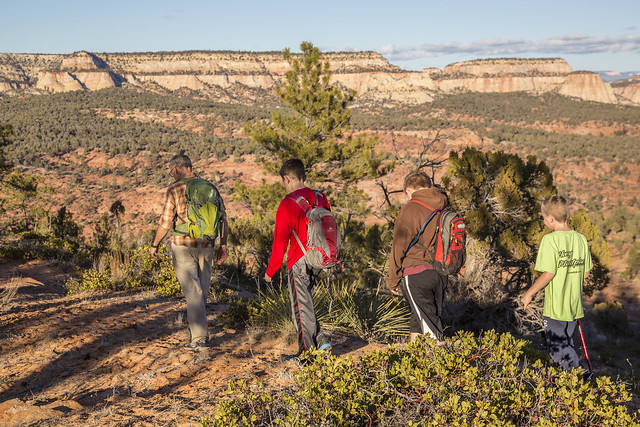Parunuweap Canyon WSA
This expanse of public land offers stunning canyon vistas and a unique hiking opportunity. By following the East Fork of the Virgin River, you can hike over ten miles through the canyons into the east side of Zion National Park. Bear in mind to check with the Park concerning fees. Also, the Park currently maintains a research area immediately downstream of the WSA that is closed to backcountry use. The northern half of Parunuweap is heavily wooded with pinyon and juniper with a jeep trail leading down into the canyon. This route should only be taken by people experienced in driving on rough mountain roads. The main landmarks in and directly south of the southern portion of the WSA are Harris Mountain and Elephant Butte. Again, springs and plant life concentrate animals in the area. Mule deer are common, and with the mule deer come predatory mountain lions. Many kinds of hawks, eagles and other birds can also be seen in the area. Beware, however, since rattlesnakes are also common here. Special Features: A major historical feature is the Elephant Gap or Foote Ranch Road, believed to follow the pioneer route between Pipe Spring, Arizona, and Long Valley, Utah. About 4.5 miles of this route are cherry-stemmed from the WSA and 4 miles are considered to be a way within the WSA. The state sensitive bald eagle occasionally roosts in the WSA in the winter. The peregrine falcon may nest within the WSA. The golden eagle may also sometimes inhabit or nest in the WSA. Other state sensitive or USFWS candidate or threatened animal species that may inhabit the WSA include ferruginous hawk, Mexican spotted owl, western yellow-billed cuckoo, and Bell's vireo. USFWS candidate, threatened or endangered plant species that may occur in the WSA are Asplenium andrewsii, Erigeron sionis, Heterotheca jonesii, and Sphaeromeria ruthia.
Values
This expanse of public land offers stunning canyon vistas and a unique hiking opportunity. The main landmarks in and directly south of the southern portion of the WSA are Harris Mountain and Elephant Butte. Again, springs and plant life concentrate animals in the area. Mule deer are common, and with the mule deer come predatory mountain lions. Many kinds of hawks, eagles and other birds can also be seen in the area. Beware, however, since rattlesnakes are also common here.
Visitation Information
By following the East Fork of the Virgin River, you can hike over ten miles through the canyons into the east side of Zion National Park.
Visitor Advisory
Check with the National Park Service (Zion) concerning fees. Also, Zion National Park currently maintains a research area immediately downstream of the WSA that is closed to backcountry use.
Phone
Addresses
Geographic Coordinates
Directions
Parunuweap Canyon WSA is located in western Kane County, about 25 miles northwest of Kanab, UT.


